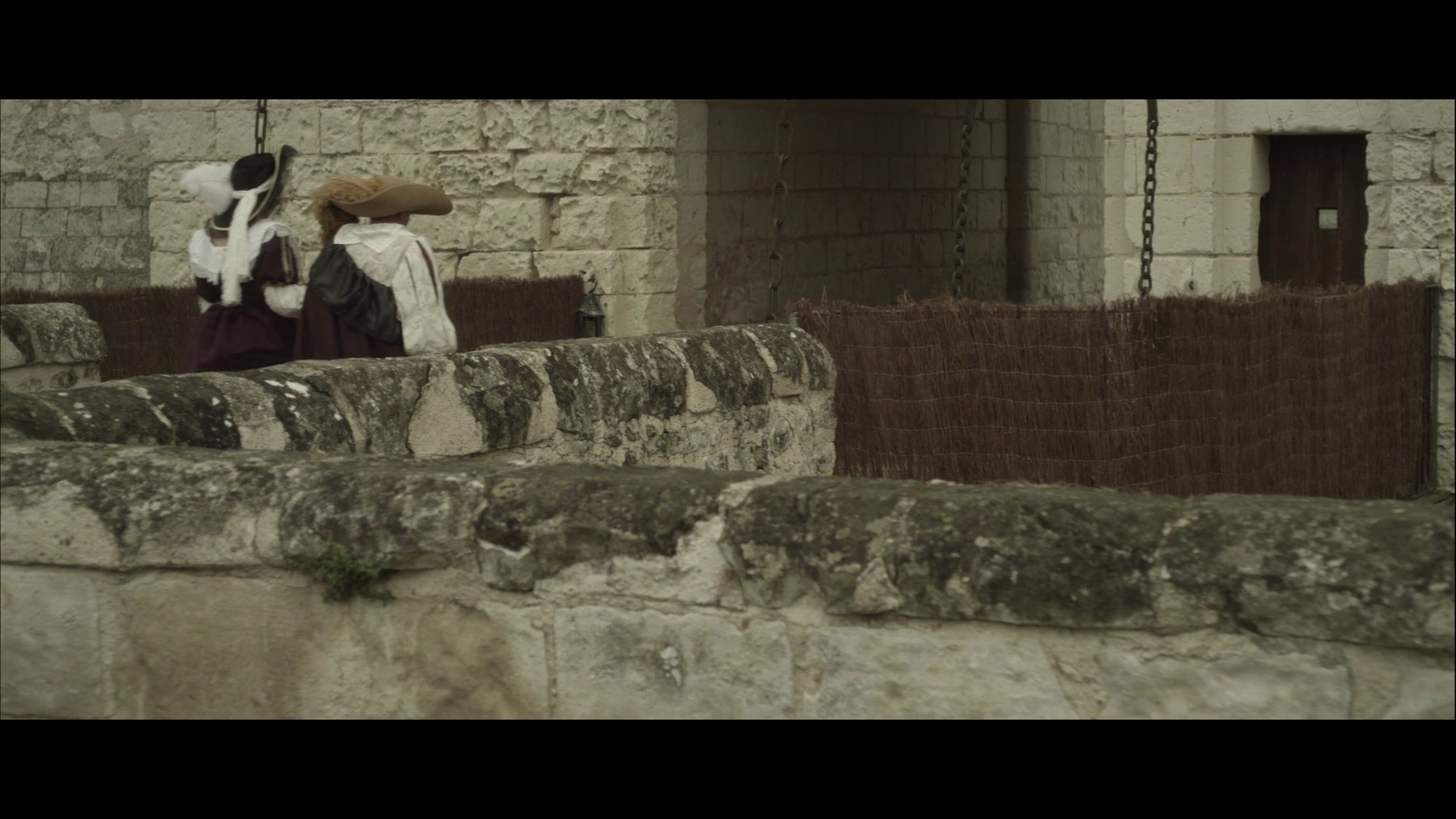Through his work, Shakespeare incarnated and continues to incarnate a certain image of love and more specifically the history of the lover’s dialogue. In the case of Romeo and Juliet, it is one of impossible love, close to an adolescent sentiment, in which consuming passion allows the breaking of taboos. If desire and transgression are evoked in the playwright’s celebrated work, it is through the lover’s discourse. The affection and frustrations of the two lovers are very present in their exchanges, especially at the moment of their first kiss, in which Romeo’s lips are compared to “two blushing pilgrims.” In Christophe Herreros’s film De cape et d’épée (Swashbuckler), a loose reference to the play, the only scene with dialogue announces the impending separation of the two lovers. Herreros wrote a text that conserves an almost timeless tone.
“Laura: I don’t want you to risk your life for me. I came here tonight, to tell you that I don’t love you, I never did and I never will. You are but an insect living in the shadow of my father’s sword.
Valentin: You don’t love me? I’ll go away. I will be back. I will gather an army, mightier than your father’s. I’ll conquer your heart again and take you away.”
These exchanges, although extremely clear and sincere, seem emptied of their content. The romantic aspect of the re-written, re-adapted, and re-worked lover’s dialogue becomes a myth, even a cliché, of what love is. Certain words symbolize it: the moon, an army, a castle, which call back to a gallant and chivalrous aesthetic. It’s no longer the discourse that matters but that vehicles an imaginary of passion and desire through the centuries. The lover’s discourse thus moves through eras in a theatrical form via diverse authors, and then is inscribed into the heart of cinematographic practice and more recently has seen a veritable adaptation for TV series, soap operas and telenovelas. Evoking the Canticle of Canticles, Julia Kristeva evokes the lover’s dialogue in associating it to a form of theatricality, as if one and the other were inseparable: “But more immediately still, the space of a psychic interiority is drawn out here, inseparable from the amorous space. This interiority remains of course scenic, of a polyvalent theatricality, would it not be by its vocal, gestural, visual consistence before verbal. Its presence in the heart of theatre is exercised by speech but also by the body of the actors.”1 To come back to Romeo and Juliet, the theatricality of their at once physical and passionate love will be particularly fantasized by the cineastes of the 20th century. From theatre to cinema, the fluidity and plasticity of Shakespeare’s writing glides easily from one to another. “A thing happens and is perhaps surprising: his works grace the screen, although their tormented, versified, archaic language seems to constitute an obstacle. The reason is that certain aspects of his dramaturgy prefigure the cinematographic representation of a diegesis. This concerns as much the elaboration of a script as spatial installation and the production stage, as well as editing, in a broad sense, without forgetting the place reserved for actors.”2 Shakespeare’s theatre indirectly prefigures the birth of cinema as it already contains the necessary tools for cinematographic dramaturgy. He thus influenced a number of filmmakers. For example, the American Baz Luhrmann, in his film Romeo + Juliet, chose to project the action into the present-day United States while conserving the original dialogue. If in the ensemble of adaptations filmmakers allow themselves some liberties, a principal element remains: the lover’s dialogue. It is the case of numerous films that conserve an interest for the amorous scene that adapts more or less freely to different epochs. The amorous conversation in its romanticized form still figures in the foreground. For Herreros, the characters speak in French, the voice-over is deliberately slightly off. De cape et d’épée evokes the television series of the 1990s rebroadcasted in France, in which the actors of Melrose Place and Beverly Hills, badly dubbed, recounted their devastating and passionate romances. The artist amuses himself, he makes the lover’s dialogue meet in its three most used and worn forms. Theatre, cinema and television come together at this point of contention that is the lover’s story. Here, it is almost pared-down, the artist only offers six minutes of intrigue, the decor appears to be the main character and the lover’s dialogue only lasts two minutes. The decor is also indicative of a taste for B series and science fiction that construct almost deserted settings in which the figures always seem vaguely asleep. The scenery plays a central role and is very elaborated, but remains in a certain sense artificial. It is constructed around and for the romantic scene. Reduced to a strict minimum, the film shows the resilience of the art of the dialogue in skillfully bringing together theatrical adaptation to cinema with the light sugary taste of mainstream televisual culture.
-Marion Vasseur Raluy
1 Julia Kristeva, « Le Cantique des cantiques », Pardès 2002/1 (N° 32-33), p73.
2 Henri Suhamy, « Shakespeare, cinéaste par anticipation », Études anglaises 2002/2, p.202
Christophe Herreros, De cape et d’épée, 2013 (film still)
Christophe Herreros, De cape et d’épée, 2013 (film still)
Christophe Herreros, De cape et d’épée, 2013 (film still)
Christophe Herreros, De cape et d’épée, 2013 (film still)
Christophe Herreros, De cape et d’épée, 2013 (film still)
Christophe Herreros, De cape et d’épée, 2013 (film still)
Christophe Herreros, De cape et d’épée, 2013 (film still)
Christophe Herreros, De cape et d’épée, 2013 (film still)









